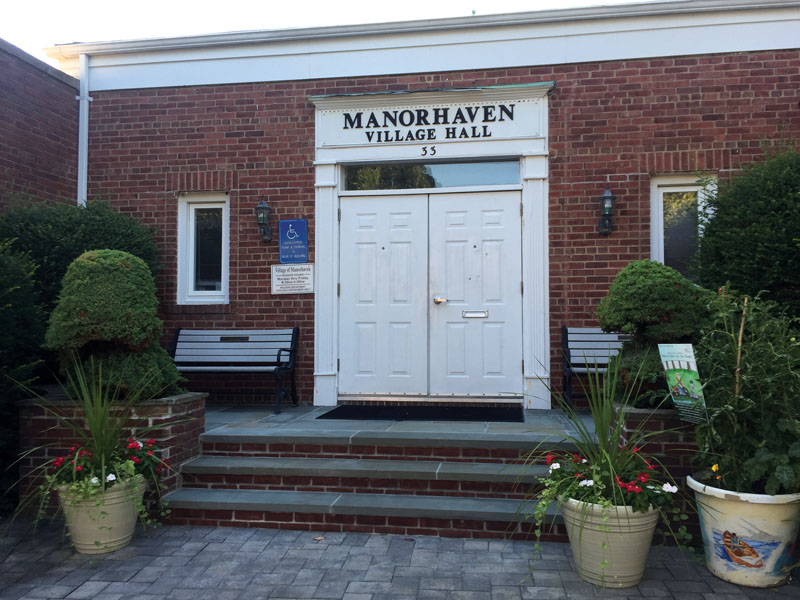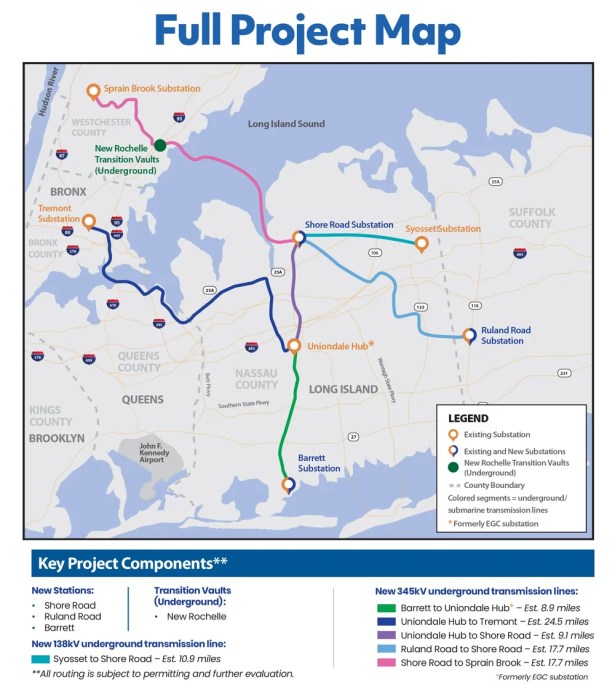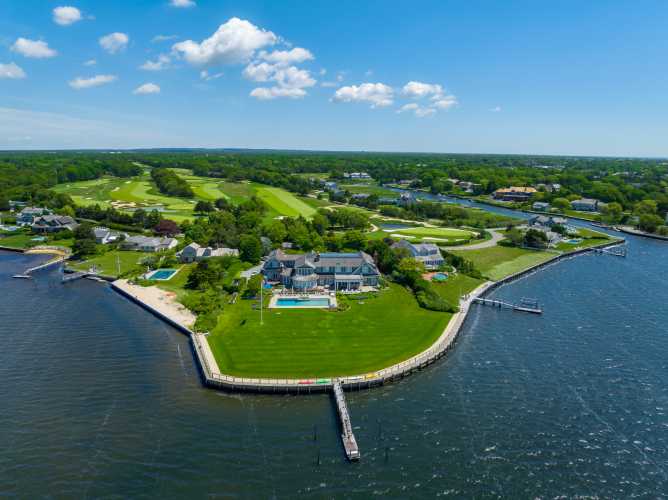Manorhaven residents, builders and the administrators stand at a crossroads in determining the future of Manhasset Isle and the village at large.
Days after a heated four-hour public hearing over a 49-unit mixed-use development on Manhasset Isle, more than 100 people signed a petition calling for the village to halt high-density development on Manhasset Isle and create a comprehensive plan for Manorhaven.
Manorhaven Mayor John Popleski said engineers from the consulting firm Dvirka and Bartilucci will prepare a comprehensive study plan for the village, concentrating on Manhasset Isle. Popleski said he anticipates the engineers presenting their plans to the board of trustees in June and creating their study after that meeting.
“I wholeheartedly agree with the residents,” Popleski said. “There needs to be a plan.”
Regarding an application for a 49-unit development at 30 Sagamore Hill Drive, which caused contention between residents, board members and developers during a public hearing on April 23, Popleski said he will continue to talk with other village trustees and will probably host a public forum so the board can hear residents’ concerns.
“I don’t want to see a highly dense area,” Popleski said. “I still want to protect the beauty that we do have in the area. Is it going to be developed? Anything can be developed, but it has to be developed wisely.”
At that April 23 public hearing, the board of trustees agreed to table the application for the mixed-use development until their May 28 meeting, citing environmental concerns and a desire to seek a third-party environmental review.
Some residents raised concerns at the meeting about the development’s potential impact on local traffic and water and sewage infrastructure, and urged the board to create a plan for Manhasset Isle instead of approving projects as they come in.
In the days after the April 23 public hearing, resident Gabrielle Durand created a petition on change.org that has received over 100 signatures calling for the village to stop construction of “high-density projects” on Manhasset Isle, along with a plan for the village’s future.
“Manhasset Isle’s capacity is nearing its limit with the one and only road leading in and out becoming increasingly congested,” the petition reads. “The existing infrastructure will strain under further excessive development. Parking, sewer systems, cell service—all will be affected by overcrowding.”
The organizer also said Manhasset Isle’s native wildlife, including ospreys, owls and foxes, may be at risk due to overdevelopment.
Former Manorhaven Trustee Ken Kraft, who spoke about his concerns at the 30 Sagamore Hill Drive site at a March Board of Zoning Appeals meeting, where the board approved seven variances, including one that reduced the number of required parking spots, said the village has to think wisely when moving forward with any potential projects.
“To me, the sewer system is a lot more critical than worrying about building more condos,” Kraft said.
At a March Board of Trustees meeting, Popleski said the village lost $1 million in federal funding for a sewage replacement project on the village’s channel crossing pipe, which he said is at risk of deterioration.
Popleski said recently that the village is still in talks with state and county officials about finding alternative funding sources for the infrastructure project.
Manorhaven Trustee Jeff Stone said the board is listening to residents’ concerns about development around the village and is looking into ways to better notify residents and involve them in the development process when a builder proposes an application to the village.
Increasing public awareness about proposed projects would include installing large billboards outside proposed project areas and emailing residents about the applicant’s project as soon as possible, rather than just notifying residents within 200 feet of a proposed project.
“It’s really about being respectful to residents here,” Stone said.
Stone also said that by having more conversations with residents and developers to address their concerns about development, compromises can be made that allow different sides to meet in the middle.
Along with increasing public awareness, Stone said he sees an end to the village’s current approach to development, which he said relies on precedent and judges individual projects based on what came before when reviewing building applications. Instead he sees the village building a more concrete vision for future development.
“I think good days are ahead,” Stone said. “I’d love to see the village partner with all the residents and builders. There’s a place for everyone here. And first thing is respect.”






























